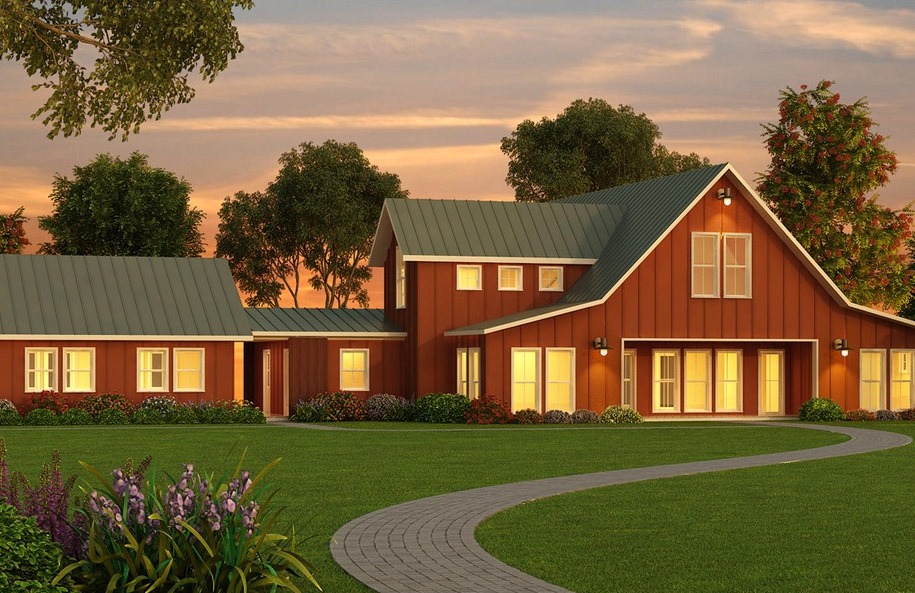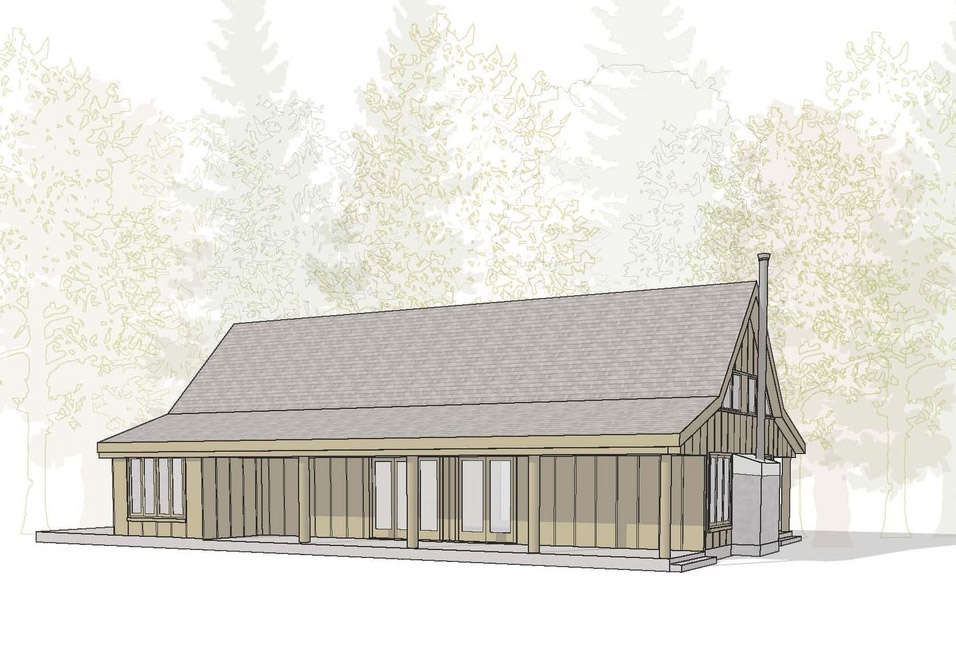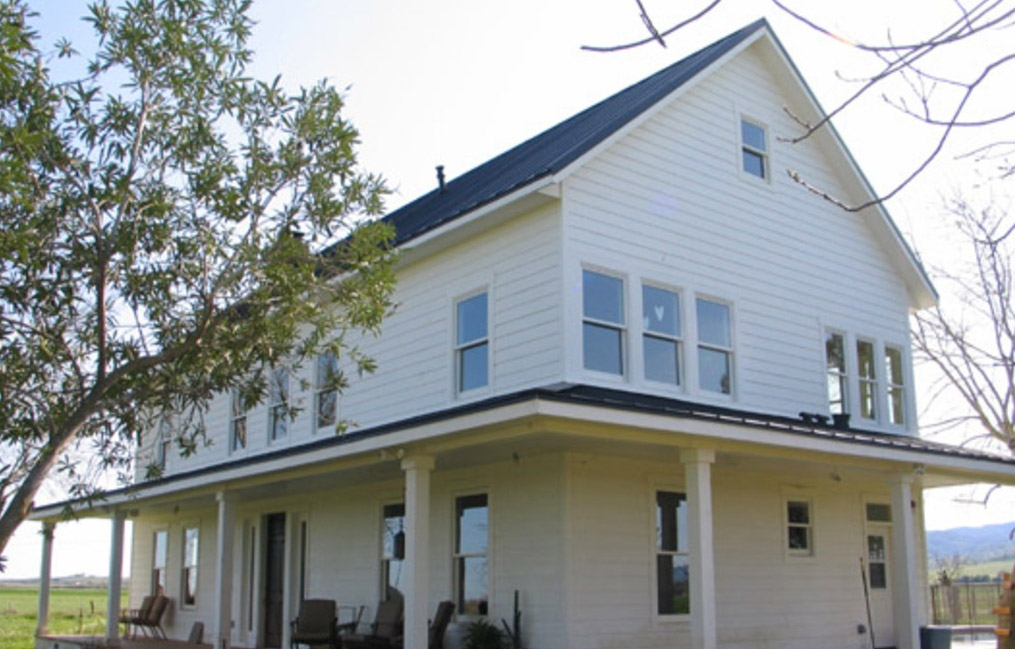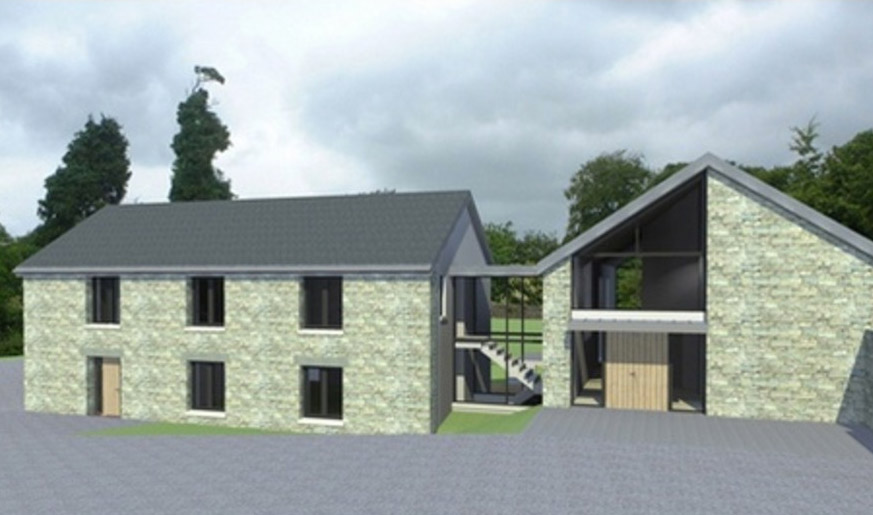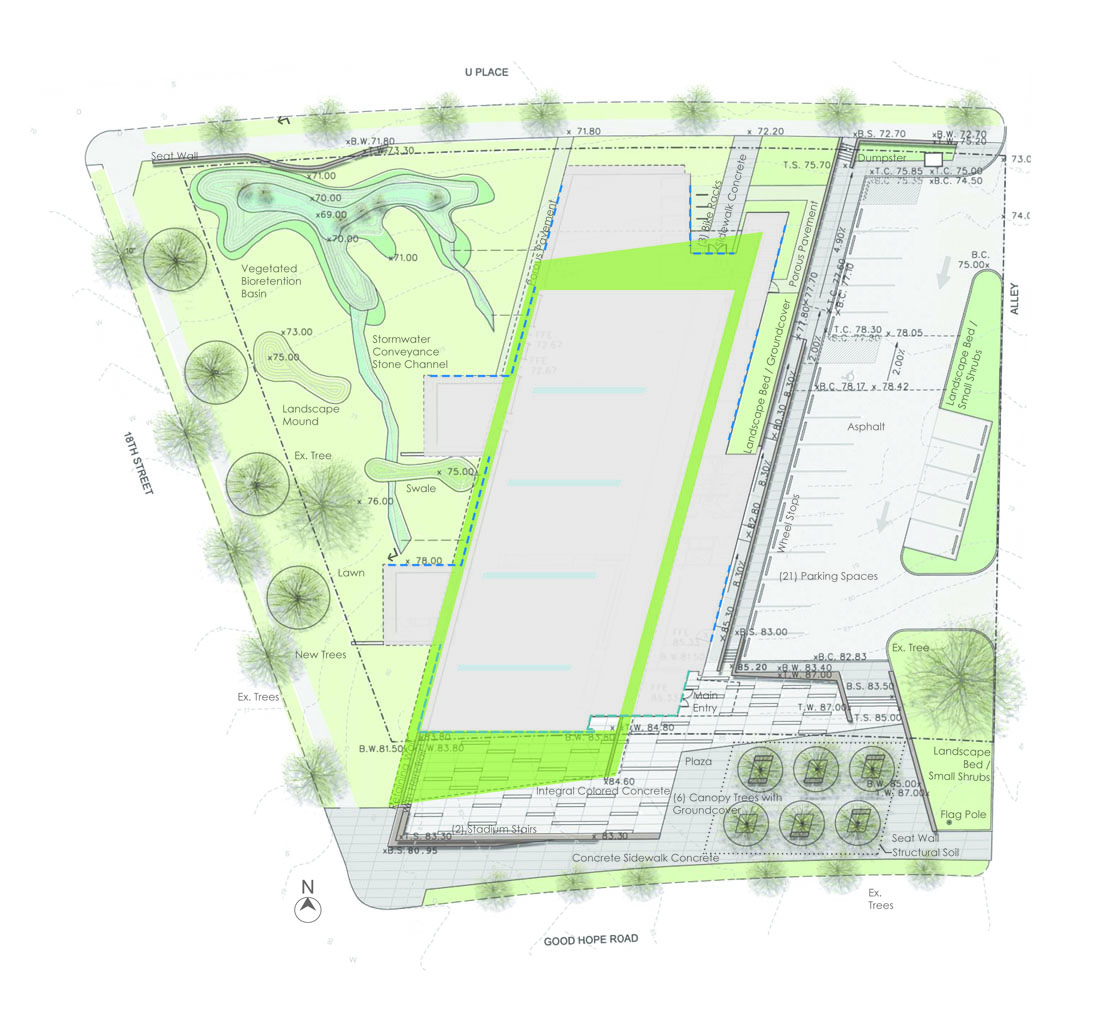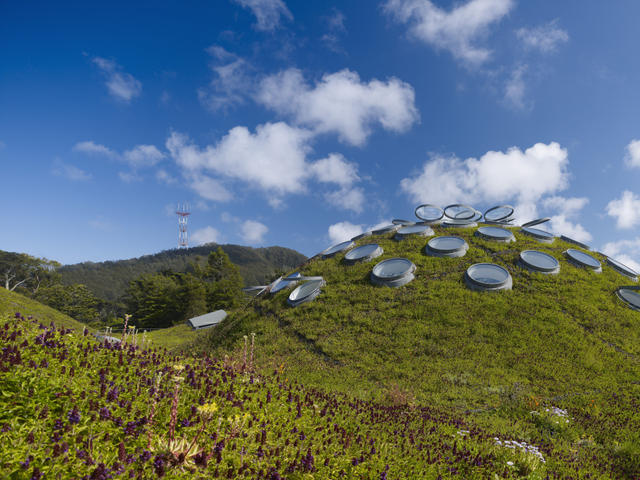Sustainable Site Planning Basics
One of the most important and effective ways to create sustainable designs is by taking a collaborative approach. Ideally all of the project stakeholders (owner, architect, engineers, contractors, etc.) are brought together before the design process begins, and the design process can be completely collaborative, with all parties providing valuable input based on their expertise. The reality, however, is that this collaboration rarely happens, especially on smaller-scale projects.
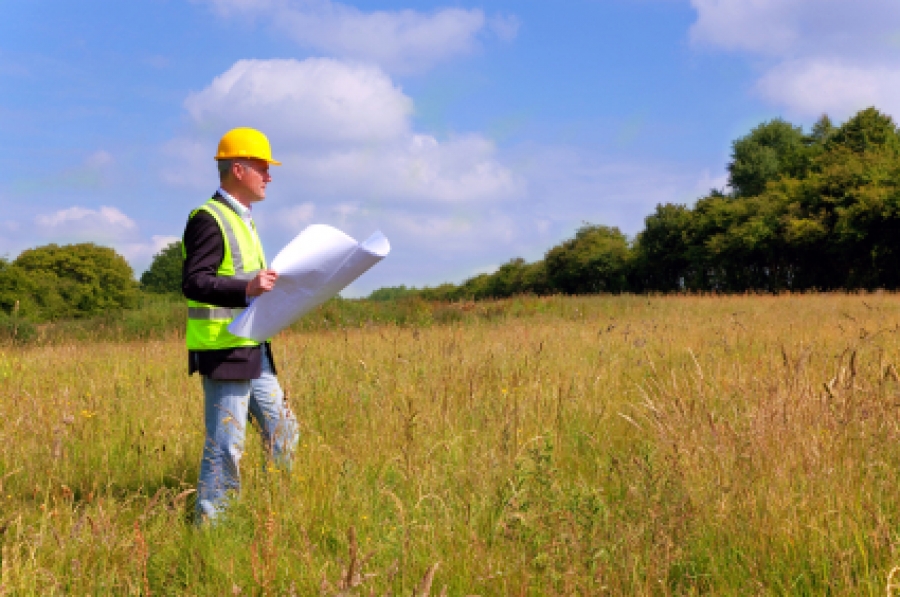
In my experience, the process typically involves the owner hiring an architect who later hires the engineers. Finally the contractor is brought on board late in the design process or after the design is completed. Often the architect creates preliminary designs for the project including site layout, building location and orientation, elevations, floor plans, etc. Sometimes this occurs with little or no input from the engineers. When the engineer comes on board, the opportunities for collaboration and changing the design are diminished. However, the process can evolve this way for many reasons, and I understand that it will continue to work in this way for many projects.
After years of trying to shoehorn low-impact development (LID) and green practices into site layouts created by architects, I decided that providing some framework for creating sustainable site designs was the best approach to take. In doing that I created a presentation for architects that I take on the road. This article is that presentation in distilled form. The intent is to provide architects and other design professionals with a toolbox for sustainable site planning and therefore to facilitate better site designs. Below I have briefly addressed seven topics of sustainable site design.
What Is a Sustainable Site Plan?
My definition is as follows: "A sustainable site plan has the least environmental impact while still meeting the client's project goals." It's not sustainable if it only parks half the cars that the project needs and costs twice as much as the budgeted amount. Just like any other design, sustainable design must fit within the typical project parameters and must also consider the environmental impacts.
Site Selection
Site selection can significantly effect the environmental impact of a project. Some specific parameters to consider when selecting a site include the following:
- Avoid flood plains. Continued development in natural flood plain areas has contributed to increased flooding, decreased flooding, and increased soil loss.
- Provide buffers for bodies of water. Development around bodies of water such as streams and wetlands should be limited and include buffers of undisturbed areas of 50' – 100' or more.
- Avoid greenfields. Greyfields and brownfields are often less expensive to develop, place less stress on infrastructure, and limit the environmental impact of developing previously undeveloped sites.
- Keep transportation in mind. The transportation of people and goods to a site can have significant effects. Try to select sites accessible by public and non-motorized transportation.
Site/Building Layout
The simple act of properly orienting a building can create energy savings of up to 25%. As little as an eight-degree rotation can have an impact. Consider the following when siting and orienting buildings.
- Elongate the plan on the east/west axis.
- Maximize north and south exposures for daylighting.
- Minimize east- and west-facing windows.
- Orient the most populated areas to the north and south.
The above items are good general guidelines but keep in mind that extreme climates may warrant different practices. For instance, in extremely cold climates, limiting the number of windows on the north side may create energy savings that outweigh the benefits of the daylighting that they provide.
Impervious Surfaces
Increasing the imperviousness of a site can have a tremendous effect on the water cycle. Impervious surfaces limit groundwater recharge, increase pollutant loads and runoff, and create a heat island effect. It is important to limit the impervious areas on site to a minimum. Doing so often improves the aesthetic appeal of a site, reduces the environmental impact, and saves money. Below are some ways to reduce site imperviousness.
- Minimize parking areas by adhering to the minimum zoning code or less, incorporating compact car spaces when possible, and reducing lane sizes.
- Provide plantings in and around parking areas.
- Implement green roofs.
- Implement pervious paving options such as pervious pavement/asphalt, pervious concrete, permeable pavers, and "grass pave" systems.
Grading Considerations
The environmental impacts of mass grading a development or building site are often overlooked. Site grading destroys the natural ecosystem present within the soil. This ecosystem breaks down pollutants, provides nutrients for biota, supports insect and animal life, and has numerous other benefits. It takes many years for the soil to recover from mass grading; in some cases it never does. Soil erosion, which can be a temporary or permanent effect of grading, pollutes waterways and washes valuable soil off-site. Whenever possible we should try to limit grading operations as in the distances given below.
- Less than 10' beyond surface walkways, patios, surface parking, and utilities.
- Less than 40' beyond the building perimeter.
- Less than 15' beyond primary roadway curbs.
- Less than 25' beyond constructed areas with permeable surfaces (such as pervious paving, stormwater detention areas, and playing fields).
Stormwater Management
Stormwater runoff is one of the most significant environmental impacts of a developed site, but it also provides one of the greatest opportunities for sustainable design. All of the items listed above help to limit the amount and speed of stormwater leaving the property and also contribute to improving the water quality. However, developing a site can significantly alter the hydrologic cycle for the property and surrounding area. Steps can and should be taken to maintain the pre-development hydrology or even to improve it. Many municipal regulations require that the post-development runoff rate does not exceed the pre-development rate but do not address runoff quantity. These regulations are largely flood control-based and do not address groundwater recharge and the hydrologic cycle. The low-impact development (LID) techniques shown below can be used to mimic the pre-development hydrology.
- Raingardens/Bioretention: 6" – 12" deep, 8% – 10% of the site area, less than 1/2 acre drainage area, up to 2 acres possible, landscape islands, and 4' – 10' between parking rows and 8' – 10' for double-loaded rows.
- Wetlands: 6" – 12" deep, large drainage areas (often less than 25 acres), minimum of 6” – 18” permanent pool depth, excellent water quality control and wildlife habitats.
- Grass Swales/Infiltration Trenches: up to 5 acres of drainage areas, 1% – 4% slopes, low-maintenance and improved stormwater quality.
- Green Roofs: well suited for urban and ultra urban areas, intensive and extensive types, less than a 20% roof slope, improved stormwater quality and interception and storage of rainfall (up to 50%).
Landscape Design
Landscape design is often ignored in the initial planning stages and is tacked on at the end of the project. This practice is unfortunate and discounts the many benefits that proper landscape design can have, beyond aesthetics. On the other hand, improper landscape design can have significant negative effects such as excessive use of potable water for landscaping and erosion. Below is a list of items to consider during the site planning phase and throughout the design process.
- Limit potable water use to native species, place landscape areas to receive runoff, and use captured rainwater.
- Shade large hardscapes.
- Shade buildings in summer and allow sunlight in during winter.
- Place and design landscape areas to filter and clean stormwater.
- Site raingardens in parking areas.
- Dig bioretention, rather than retention, ponds.
Resources
Below are some excellent resources for additional and supporting information about sustainable sites.
- The Sustainable Sites Initiative
- The United States Green Building Council
- Portland Sustainable Stormwater Management Program
- US EPA
- The Center for Watershed Protection
- Prince George's County, Maryland, Division of Environmental Protection
- Sustainable Site Planning Basics
All of the techniques listed above are just items to consider when performing site planning. As you can see, the items impact the architect, civil engineer, MEP engineers, contractor, and owners. Ultimately, the best way to produce sustainable site plans is to get the entire design and construction team together early and often in the development process.
Sustainable Site Planning Basics was originally published on The Green Civil Engineer

Bob Faulhaber
Bob is a registered professional engineer in TN with a master’s degree in Civil Engineering and over ten years of experience in project planning, design and management. Bob was on the forefront of the green building movement and was ahead of the curve in obtaining LEED accreditation in 2005. He is passionate about sustainability and lectures and writes about green buildings and sustainability in an effort to educate the design community and the general public.
Websites: Faulhaber Engineering & Sustainability | The Green Civil Engineer


